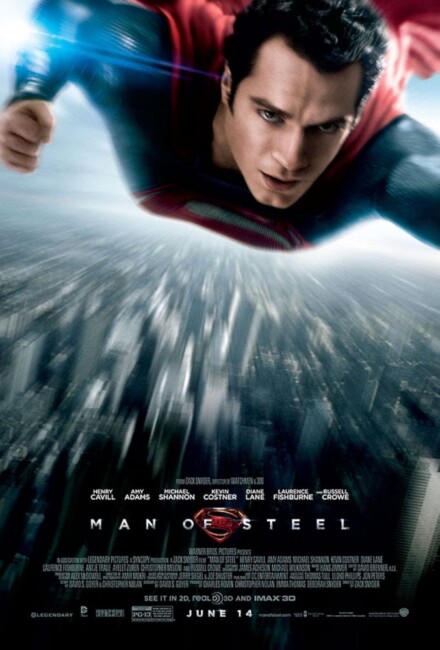USA. 2013.
Crew
Director – Zack Snyder, Screenplay – David S. Goyer, Story – David S. Goyer & Christopher Nolan, Based on the DC Comic-Book Created by Joe Shuster & Jerry Siegel, Producers – Christopher Nolan, Charles Roven, Deborah Snyder & Emma Thomas, Photography (3D) – Amir Mokri, Music – Hans Zimmer, Visual Effects Supervisor – John ‘DJ’ Desjardin, Visual Effects – Double Negative (Supervisor – Ged Wright), MPC (Supervisor – Guillaume Rocheron), Scanline VFX (Supervisor – Chad Wiebe) & Weta Digital (Supervisor – Keith F. Miller), Special Effects Supervisor – Allen Hall, Production Design – Alex McDowell. Production Company – Syncopy.
Cast
Henry Cavill (Clark Kent/Kal-el/Superman), Amy Adams (Lois Lane), Michael Shannon (General Zod), Russell Crowe (Jor-el), Kevin Costner (Jonathan Kent), Laurence Fishburne (Perry White), Diane Lane (Martha Kent), Antje Traue (Faora-Ul), Harry Lennix (General Swanwick), Christopher Meloni (Colonel Nathan Hardy), Richard Schiff (Dr Emil Hamilton), Ayelet Zurer (Lara Lor-van), Dylan Sprayberry (Clark Kent Age 13), Cooper Timberline (Clark Kent Age 9), Michael Kelly (Steve Lombard), Jack Foley (Teenage Pete Ross), Joseph Cranford (Adult Pete Ross), Ian Tracey (Ludlow), Christina Wren (Major Carrie Farris), Rebecca Buller (Jenny)
Plot
The planet Krypton is about to implode because the populace has been unheeding in their use of its natural geothermal energy. The scientist Jor-el defies the planetary ruling council’s orders and takes an all-important genetic codex. At the same time, the military leader General Zod leads an insurrection against the council. Zod demands the codex back and kills Jor-el, not before Jor-el launches a rocket containing the codex and his infant son Kal-el, the first child naturally born on Krypton in centuries. The council sentences Zod and his cohorts to The Phantom Zone just before the planet is obliterated. On Earth, Kal-el grows to manhood after being adopted by Kansas farmer Jonathan Kent and his wife Martha who name him Clark. He discovers that being on Earth under its yellow sun grants him enormous powers, invulnerability and strength but conceals these powers from people. Learning of the discovery of a buried alien object, Clark heads to the frozen norths of Canada and finds a Kryptonian craft there. A key he has been left activates a projection of his father that teaches him about who he is. Clark has been followed there by Daily Planet reporter Lois Lane and he is instrumental in saving her life. Fascinated by who he is, she tries to publish an article about him but this is rejected by her editor Perry White. She determines to track him down and follows a trail that leads to the Kent farm. At the same time, a spaceship appears in orbit containing General Zod and his army. Zod demands the surrender of Kal-el otherwise they will attack Earth. This forces Clark’s hand in revealing his presence to the world. Lois is drawn into the fray when the US military become aware that she knows who he is. In facing Zod, Clark realises that he must stand up to fight for Earth.
What is the problem that DC Comics has in getting their act together on cinema screens? DC has marginally higher sales figure than their principal industry rivals Marvel Comics and yet Marvel has managed to turn their properties into a multi-billion dollar industry, while DC hasn’t. Since the end of the 1990s, Marvel’s various films adaptations, which consist of the likes of Blade (1998), X-Men (2000), Spider-Man (2002), Daredevil (2003), Hulk (2003), The Punisher (2004), Elektra (2005), Fantastic Four (2005), Ghost Rider (2007), Iron Man (2008), Captain America: The First Avenger (2011), Thor (2011), Ant-Man (2015), Deadpool (2016), Doctor Strange (2016), Black Panther (2018), Venom (2018), Captain Marvel (2019), Black Widow (2021), Eternals (2021), Shang-Chi and the Legend of the Ten Rings (2021) and various sequels to these, have become one of the most profitable industry pipelines in Hollywood. Most Marvel films are now not just up to multiple sequels but have passed onto reboots – The Amazing Spider-Man (2012), Fantastic Four (2015) and the tv series Daredevil (2015-8) – and team-ups between characters such as The Avengers (2012).
You would think that DC Comics only need look at the success that Marvel is having on movie screens and it would occur to them “we have just as many comic-book properties here, we could be doing the same.” Heck, DC is even owned by a film studio – Warner Brothers – yet despite this seemed unable through the whole of the 2000s up until 2016 to get their act together while Marvel managed to make The Avengers despite the characters previously appearing in films made at different studios. Certainly, DC have had some undeniable successes on the big screen during this same time period with Christopher Nolan’s trilogy of Batman films – Batman Begins (2005), The Dark Knight (2008) and The Dark Knight Rises (2012) – all of which have received rapturous fan reception and box-office reception.
Outside of the Batman films though, DC’s success on the big screen has been spotty. There have been adaptations of Jonah Hex (2010) and Green Lantern (2011) but both were heavily disliked by fans (although I kind of liked the latter – and it was still successful enough that a sequel has been discussed). The only other DC film works have been more distaff titles that stand outside of regular DC continuity such as Constantine (2005) and Zack Snyder’s Watchmen (2009), a good film that again met mixed critical reception but at least enjoyed good box-office. The entire run of DC superhero films throughout the 2000s is equal to the amount of films that Marvel has released in any two years of the decade.
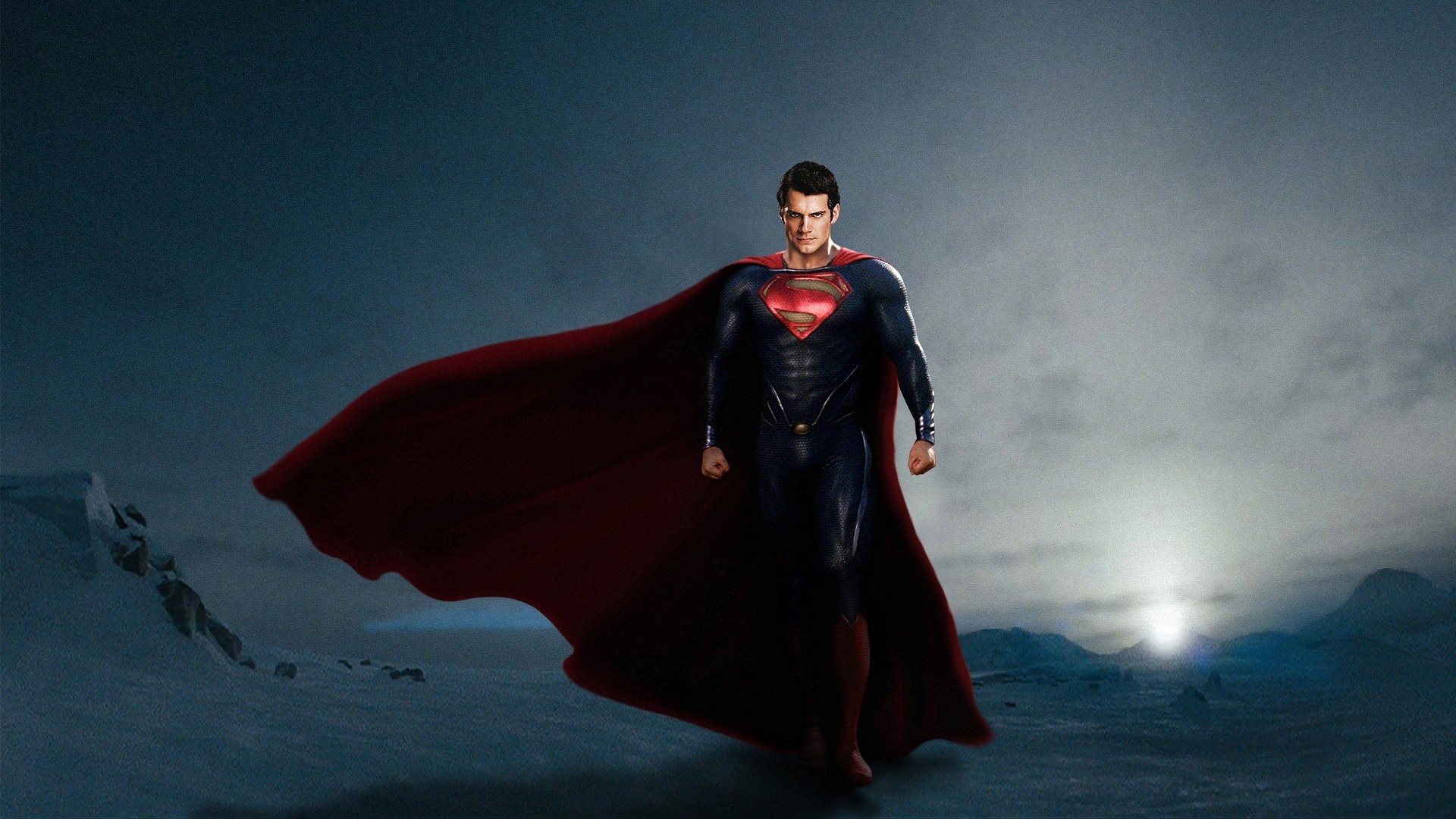
It is not as though there is no interest in DC-based films but an extraordinary number of these seem to have spent their time dithering in perpetual turnaround – David S. Goyer’s plans for a film version of The Flash; Joss Whedon’s plans for a Wonder Woman film and then a David E. Kelley tv pilot that was shot but failed to air; a Justice League film that has passed through several directors and even had a cast line-up announced. DC have fared somewhat better on tv screens with the long-running success of Smallville (2001-11) and Arrow (2012-20), while the animated screen has had a good deal of success with various adaptations of DC comics-book titles from producer Bruce Timm, which have also been spun off into a series of dvd releases that adapt various graphic novels. Certainly, not long after Man of Steel came out, DC had considerable success on the tv screen with the launch of a series of tv series based on their comic-book properties with the likes of Gotham (2014-9), The Flash (2014-22), Supergirl (2015-21), Krypton (2018-9), Titans (2018-23) and Batwoman (2019-22).
The sole other DC film on the big screen during this period was Bryan Singer’s Superman Returns (2006) starring Brandon Routh. Singer made it as a homage to the first two Christopher Reeve films – Superman (1978) and Superman II (1980) – and followed on from these in terms of continuity. Superman Returns was in turn the culmination of a decade-long attempt to revive Superman – most notably the Tim Burton directed, Nicolas Cage starring Superman Lives project – that passed through the hands of various directors and some decidedly wacky permutations – for which see the full story in the documentary The Death of “Superman Lives”: What Happened? (2015). In the contemporary press writing about Man of Steel, Superman Returns was inexplicably regarded as a flop – this is quite simply untrue, it was the sixth top earning film in the US in 2006, the ninth worldwide. What it does suffer from is bad public perception. I am not sure why – there are even digs about its awfulness in Ted (2012). There is a lot of good to the film – Brandon Routh makes for a fine Superman and Kevin Spacey a wonderfully barnstorming Lex Luthor.
Immediately after Superman Returns, a sequel was announced to be called Superman: The Man of Steel. As the negative public perception started to kick in, interest in this waned until the success of Christopher Nolan’s The Dark Knight. The project gained renewed interest particularly when Nolan signed on, promising to rework Superman with the same approach he had Batman. The production was shorn of the Superman part of the title and, as in The Dark Knight, simply known as The Man of Steel and later Man of Steel, both informal sobriquets that have been coined by DC for the respective characters. Under Christopher Nolan and Zack Snyder, who solicited script contribution from a number of comic-book writers, it was decided that Man of Steel would act as a complete reboot of the character, abandoning any connection to previous films.
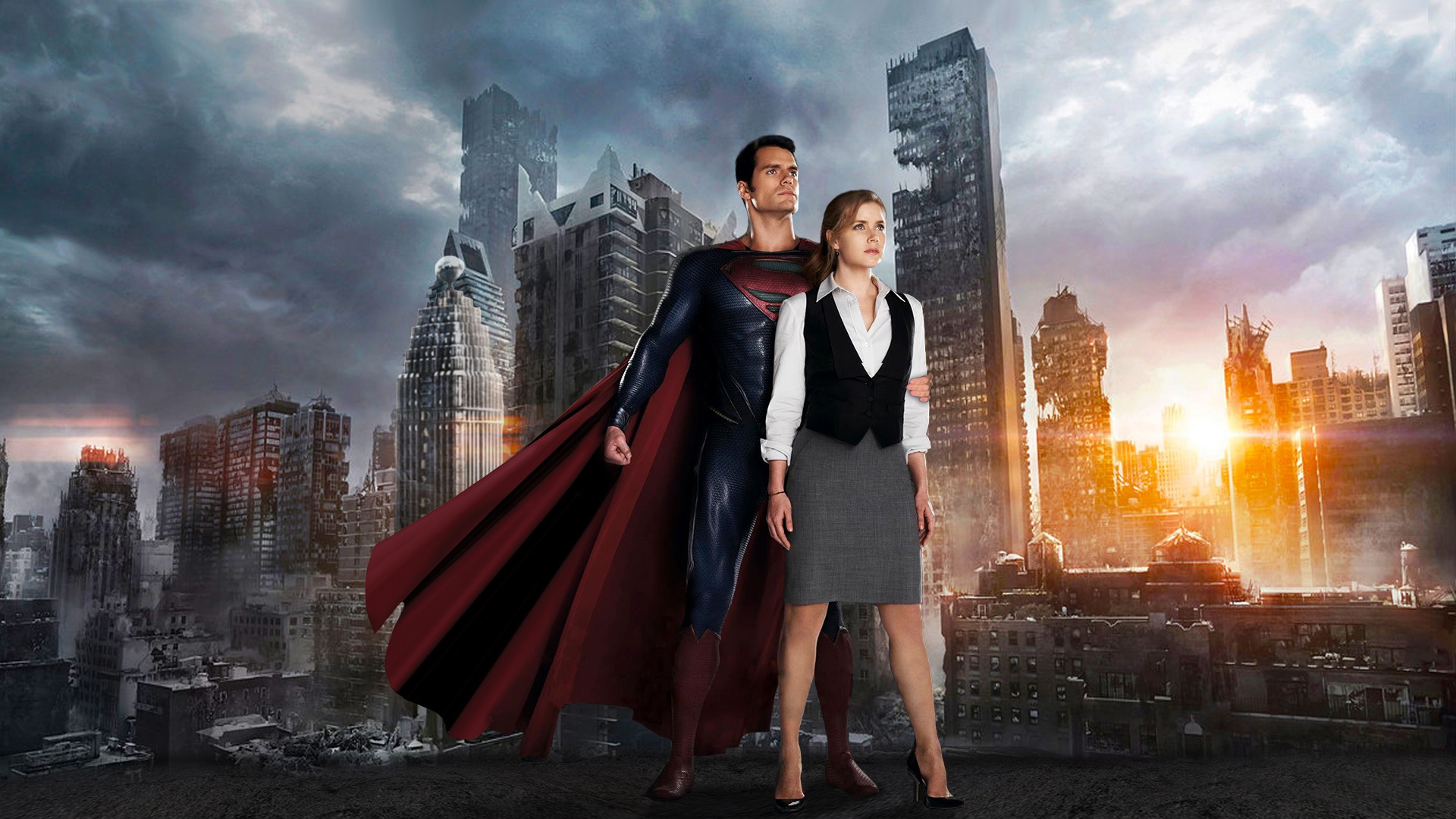
Certainly, when it comes to a comic-book adaptation, you could hardly go far wrong with having the names of Zack Snyder and Christopher Nolan united under one roof. Zack Snyder is a director who first appeared with the remake of Dawn of the Dead (2004) and then went onto the comic-book adapted likes of 300 (2007) and Watchmen (2009), as well as other ventures into the fantasy genre with Legends of the Guardian: The Owls of Ga’Hoole (2010) and Sucker Punch (2011). While Dawn of the Dead and Sucker Punch emerged with decidedly mixed effect, what you cannot deny is that Snyder approached both 300 and Watchmen with a scrupulous regard for the minutiae of each source work and adapted them with great faithfulness, even down to replicating drawn comic panels. Christopher Nolan is a director who has gained an enormous cult following with the aforementioned Batman films and other works like Memento (2000), The Prestige (2006) and Inception (2010). Nolan’s approach to DC Comics has been almost the opposite of Zack Snyder’s – he has regularly downplayed fantastical elements and frequently abandoned canon and substantially rewritten characters’ origin stories. It was interesting to anticipate which of these two approaches Man of Steel would take.
Aside from Snyder and Nolan, there is also David S. Goyer on script. Goyer is probably the Hollywood go-to writer when you want to adapt a comic-book to film, he having handled scripts for the likes of The Crow: City of Angels (1996), Blade (1998), Nick Fury, Agent of Shield (tv pilot, 1998), Blade II (2002), Blade Trinity (2004), Nolan’s Batman films, Ghost Rider: Spirit of Vengeance (2012), and acted as executive producer of Ghost Rider (2007). (See below for David S. Goyer’s other genre films).
I ended up with mixed feelings about Man of Steel. It should be said that these comments come from someone who grew up with the Christopher Reeve films and reading Superman on the comic-book page. In the quick soundbite response, Man of Steel ends up being a film where you spend the first half irritated with the substantial liberties it takes with comic-book canon and the other half bored with the mass destruction spectacle that drags on and on. I felt ho-hum during the opening scenes on Krypton. The traditional comic-book view of Krypton as a world of Grecian perfection was thrown out by the Christopher Reeve films for a design scheme that created an amazing world of crystalline splendour. In its concerted effort to reinvent everything from scratch, Man of Steel abandons either of these for what Snyder calls a world based on geothermal designs, while David S. Goyer’s script incorporates many of the details from the reboot of Krypton mythos that came in after Crisis on Infinite Earths (1986). Alas, on screen it just looks like Stock Science-Fiction World #47 and there is nothing standout about any of it. Some of the origin story has been rewritten in favour of a modern environmental allegory – Krypton is about to implode because its people have squandered its natural resources to the point of their own destruction. Russell Crowe does an okay Jor-el but I still preferred the gravitas that Marlon Brando had in the part.
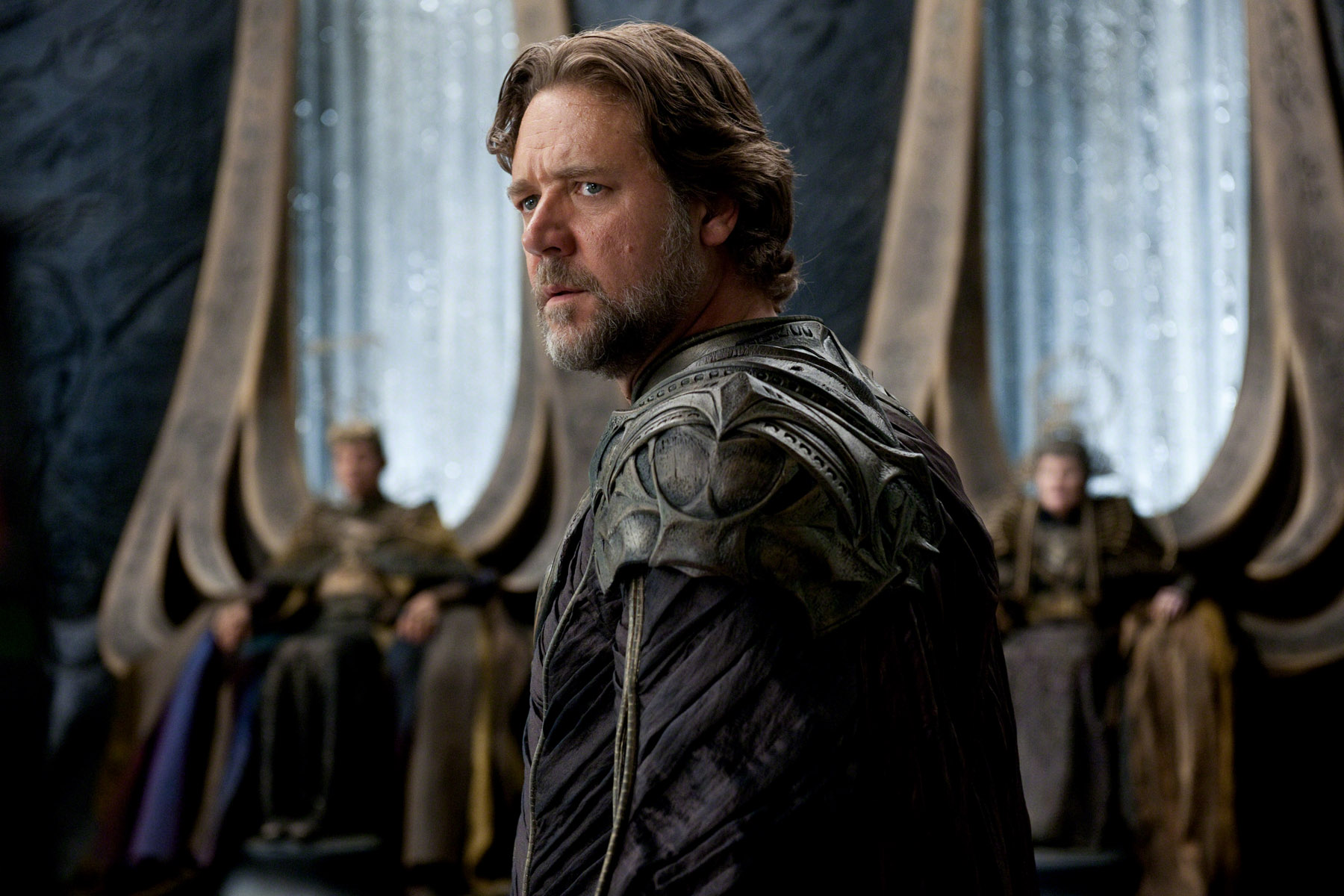
Thereafter, things start to get confusing. All of the other tellings of the Superman origin story – the ones we see in the serial Superman (1948), the 1978 film, Superman: The Last Son of Krypton (1996) and Smallville (2001-11) – take a linear approach that follows the destruction of Krypton, the young Kal-el’s arrival on Earth, his adoption by the Kents, the discovery of his superpowers, the journey to Metropolis and his assumption of the secret identity of meek, mild-mannered reporter Clark Kent and emergence as the fully developed Superman. To the contrary, Man of Steel seems to skip from the first of these to the last. We abruptly cut from the launch of the rocket and its’ nearing Earth to a mature bearded adult Henry Cavill on the road although not yet having become the caped Superman. Some, although not all, of the rest of the story is subsequently told in flashback scenes.
You also cannot help but also notice what is missing from the Superman story. We do have someone called Clark Kent but there is no Clark Kent, the bespectacled and bumblingly awkward reporter for the Daily Planet (at least until a single shot in the very last scene). This serves to rob the film of one of the essences of every telling of the Superman story – his dual identity and the conflict between his two halves as the being with godlike powers and the disguise of an ineffectual ordinary man. I can see what David S. Goyer has done with his story – he has internalised the conflict. In essence, the entire film is the character decision of Superman – should he reveal his presence as a super-being to the world or live an ordinary, anonymous life? I cannot help but feel that dismissing the Superman-Clark Kent conflict is too radical a change to canon. In other ways, the film does pay attention to canon and introduces characters from the comic-book that we have not seen on screen before such as Pete Ross, Steve Lombard and Dr Emil Hamilton, while we also see the throwing around of some Lexcorp tankers hinting at the future introduction of a Lex Luthor. You reach the end of the film with the impression that much has been held back with the intention of building Man of Steel out as a series akin to Christopher Nolan’s Dark Knight films. Consider though that the first two Christopher Reeve films were shot as actual sequels from the outset and were much better dramatically developed in these aspects without the need to hold essential elements back for later instalments.
Of course, the lack of Clark Kent reporter does remove another indispensible element of Superman canon – the love triangle between Superman, Lois Lane and Clark Kent where she pines after Superman, while he wishes she could accept him as his ordinary human self. Here instead we get a Lois Lane who works out that Kal-el is Clark before he even makes his first public appearance in the Superman suit. The end appearance of the bespectacled Clark is ambiguous and Amy Adams’ reaction seems almost unrecognising – you wonder if maybe they have not thrown in the amnesia-inducing kiss plot deus ex machina from Superman II. Many of the Superman comic-books from 1986 onwards have had Superman and Lois in a relationship, she knowing of his secret identity in one form or another, although it has wavered around about whether this is official canon and then rescinded after DC have realised that doing so always seems to take away one of the essential character conflicts of the Superman mythos.
Superman Returns was a continuation of the first two Christopher Reeve films; Man of Steel by contrast feels like a condensed remake of them – but with all the interesting bits taken out. It follows the origin story told in Superman up until about the point that Clark arrives at the Daily Planet. In particular, the scenes at the Fortress of Solitude with the appearance of the hologram of Jor-el has been taken directly from the 1978 film. The 1978 film was also the first to go with the notion that the ‘S’ crest on Superman’s chest was a Kryptonian family symbol – its’ being a symbol that stands for hope is taken from the comic-book mini-series Superman: Birthright (2004). The rest of the film is a replay of the battle with the Phantom Zone villains from Superman II minus the earlier scenes from that film at Niagara Falls and the Eiffel Tower.
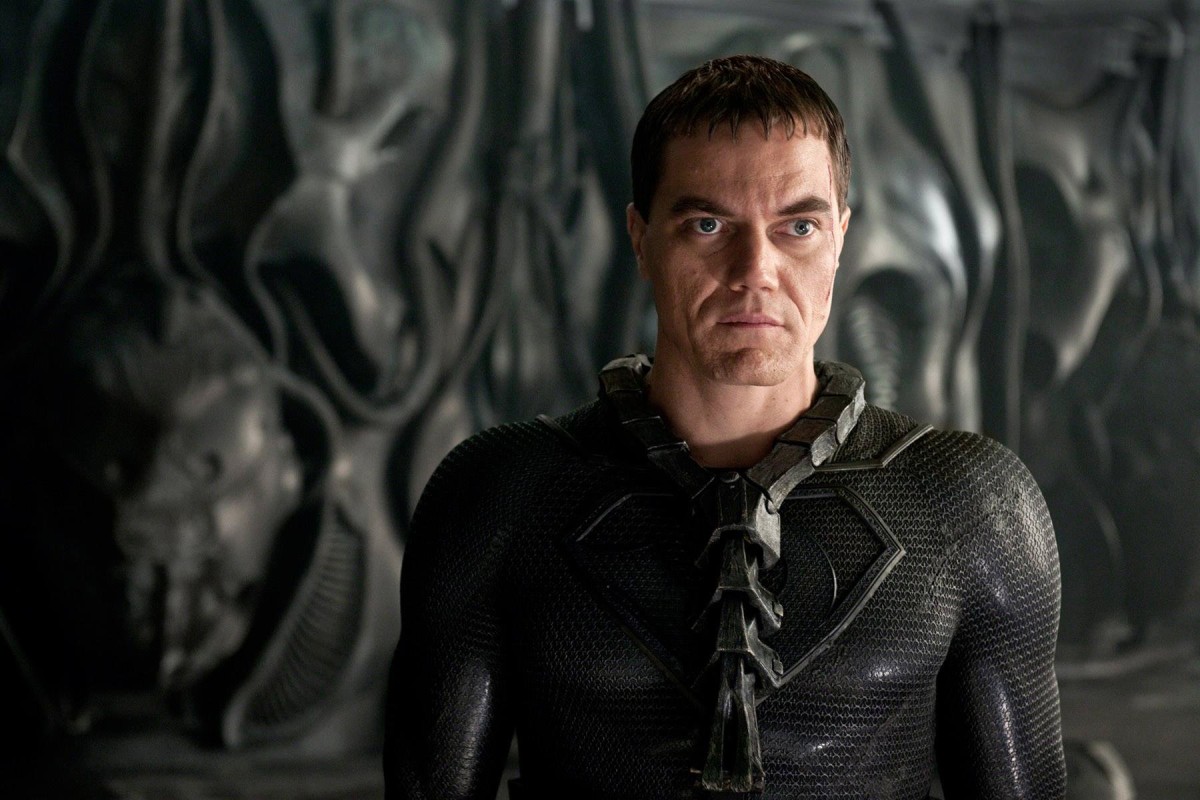
Disappointingly, Michael Shannon’s casting as General Zod lacks anything that Terence Stamp brought to the role. Shannon has gained a name in recent years for high-profile and award-winning roles in films like Revolutionary Road (2008) and Take Shelter (2011) and tv’s Boardwalk Empire (2010-4). I must confess to being puzzled by Shannon’s acclaim – his performances mostly seem to consist of either a psychotically intense stare or else allowing his long, sloping brow to furrow in an impenetrably troubled blankness. Here in comparison to Terence Stamp’s magnificently theatrical Zod, all that he gives us is a thuggish figure. Similarly, Sarah Douglas created a wonderfully cold-blooded sidekick in Ursa but the equivalent character played here by Antje Traue disappears without any distinction.
The superpowered battles are also far less interesting than in Superman II despite thirty years advance in special effects (indeed, the advent of CGI). The latter half of the film feels less like a superhero film than one of Michael Bay’s Transformers films or perhaps a sequel to Skyline (2010). There are various fights between superpowered beings that wreck Smallville and the climactic knockdown between Superman and Zod over Metropolis, which work well enough. Far less interesting is everything else, which feels like a combination of standard alien invasion cinema imagery and far too many mass destruction scenes of buildings collapsing. The film could easily have been cut of some twenty minutes of these scenes.
Henry Cavill cuts a handsome and buffed figure in the Superman suit. The problem with the role is that it only rarely grants him the opportunity to do any acting (as opposed to throwing things around). The few scenes where he does – the scene where he is questioned in military custody being the one standout – he opens up with the handsome sincerity that Christopher Reeve did so well. All that seems missing is Reeve’s boyscout earnestness and twinkle – this is a role that Cavill seems to be playing with an intent seriousness. I think Amy Adams is an enormously talented actress who is going to do some amazing things in time to come. She gives the role of Lois a perkiness and cheer. I still have it over for Teri Hatcher’s flaky Lois in Lois and Clark: The New Adventures of Superman (1993-7) but at least Amy Adams gives us more of the Lois the comic-book’s independent, determined go-getter rather than the confused Meg Ryan-modelled modern girl that Hatcher turned her into. The best screen characterisation of Lois however still remains the Dana Delany-voiced version in the animated Superman (1996-2000).
Zack Snyder and Henry Cavill next made Batman V Superman: Dawn of Justice (2016), which kicked off a crossover series between characters in the DC universe that culminated in Wonder Woman (2017). In what was then termed the DCEU (DC Extended Universe), a host of adaptations of other DC properties followed with Suicide Squad (2016), Justice League (2017), Aquaman (2018), Shazam! (2019), Black Adam (2022), The Flash (2023) and Blue Beetle (2023). A figure whose face is not seen appears in the Superman suit in Shazam!, while Cavill makes an uncredited cameo in the end credits of Black Adam.
Zack Snyder has also directed the remake of Dawn of the Dead (2004); the big screen adaptation of 300 (2007) based on Frank Miller’s graphic novel about the Greek wars; the adaptation of Alan Moore’s classic superhero graphic novel Watchmen (2009); the animated owl fantasy Legend of the Guardians: The Owls of Ga’Hoole (2010); Sucker Punch (2011) about a young girl’s imagined alternate reality; the subsequent DC crossovers Batman V Superman: Dawn of Justice (2016) and Justice League (2017), plus the extended cut of the latter with Zack Snyder’s Justice League (2021), the zombie film Army of the Dead (2021) and the space opera Rebel Moon – A Child of Fire: Part One (2023) and Rebel Moon – Part Two: The Scargiver (2024). He also wrote/produced 300: Rise of an Empire (2014) and produced Suicide Squad (2016), Wonder Woman (2017), Aquaman (2018), Wonder Woman 1984/WW84 (2020), Army of Thieves (2021) and The Suicide Squad (2021).
David S. Goyer’s other screenplays include the Jean-Claude Van Damme action film Death Warrant (1990), Full Moon’s Demonic Toys (1992) and Arcade (1994), The Crow: City of Angels (1996), Blade (1998), Dark City (1998), Nick Fury, Agent of Shield (tv pilot, 1998), Blade II (2002), Batman Begins (2005), Batman: Gotham Knight (2008), The Dark Knight (2008), Jumper (2008), The Dark Knight Rises (2012), Ghost Rider: Spirit of Vengeance (2012), Man of Steel (2013), Batman V Superman: Dawn of Justice (2016) and Terminator: Dark Fate (2019). Goyer has also directed the excellent non-genre film ZigZag (2002) about an autistic boy, Blade Trinity (2004), The Invisible (2007) about a disembodied teenager and the possession film The Unborn (2009). Goyer has also produced the genre tv series’ Sleepwalkers (1997) about dream researchers; FreakyLinks (2000) about paranormal investigators; Threshold (2005) about the investigation of a UFO; the cinematic adaptation of the Marvel Comic Ghost Rider (2007); the tv series Flash Forward (2009-10) about a mysterious worldwide premonition; the tv series DaVinci’s Demons (2013-5) about a fantastical secret history of Leonardo Da Vinci; the tv version of Constantine (2014-5), the ghost story The Forest (2016), the robot dog film A-X-L (2018), the animated web series Constantine: City of Demons (2018), the Superman prequel tv series Krypton (2018-9), the A.I. film Tau (2018), the ghost story The Night House (2020). the wendigo film Antlers (2021), the tv series’ Foundation (2021- ) and The Sandman (2022- ), the remake of Hellraiser (2022) and The First Omen (2024)
Other Superman appearances on screen are:-
- seventeen Superman animated shorts produced by Fleischer Studios between 1941 and 1943
- two serials made during the 1940s, Superman (1948) and Atom Man vs. Superman (1950) both starring Kirk Alyn
- the low-budget feature film Superman and the Mole-Men (1951), which became the basis of the long-running tv series Adventures of Superman (1952-8) starring George Reeves
- It’s a Bird … It’s a Plane … It’s Superman (1975), a tv movie adapted from a Superman Broadway musical starring David Wilson
- the big-budget film Superman (1978) starring Christopher Reeve, which led to three sequels with Superman II (1980), Superman III (1983) and the cheap Superman IV: The Quest for Peace (1987) from Cannon Films, as well as spinoffs like Supergirl (1984) starring Helen Slater and tv’s Superboy (1988-91) starring Gerard Christopher. Also of interest here is Superman II: The Richard Donner Cut (2006), Richard Donner’s edit of his original intended vision of Superman II, which had been subject to much in-fighting with the producers
- Lois and Clark: The New Adventures of Superman (1993-7), a popular tv series that focused more on the love triangle relationship between Clark/Superman (Dean Cain) and Lois Lane (Teri Hatcher)
- the excellent animated series Superman (1996-2000) where the superheroic exploits were rendered in a beautifully stylised Art Deco milieu, which led to several spinoff films with Superman: The Last Son of Krypton (1996), The Batman Superman Movie: World’s Finest (1998) and Superman: Brainiac Attacks (2006), while Superman also appears as one of line-up of DC superheroes in the same creative team’s Justice League/Justice League Unlimited (2001-6)
- The DC Universe Original Animated Films:- Superman: Doomsday (2007), Superman/Batman: Public Enemies (2009), Superman & Batman: Apocalypse (2010), All-Star Superman (2011), Superman vs. The Elite (2012), Superman Unbound (2013), The Death of Superman (2018), Reign of the Supermen (2019), Superman: Man of Tomorrow (2020), Superman: Red Son (2020) and Batman and Superman: Battle of the Super Sons (2022), while Superman also appears in Justice League: The New Frontier (2008), Justice League: Crisis on Two Earths (2010), Justice League: Doom (2012), Batman: The Dark Knight Returns Part II (2013), Justice League: The Flashpoint Paradox (2013), Justice League: War (2014), Justice League: Throne of Atlantis (2015), Justice League: Gods and Monsters (2015), Justice League vs Teen Titans (2016), Justice League Dark (2017), Justice League vs The Fatal Five (2019), Justice League Dark: Apokolips War (2020), Injustice (2021), Justice Society: World War II (2021), Justice League: Warworld (2023), Legion of Super-Heroes (2023), Justice League: Crisis on Infinite Earths Part One (2024), Justice League: Crisis on Infinite Earths Part Two (2024) and Justice League: Crisis on Infinite Earths Part Three (2024)
- the tv series Smallville (2001-11) played by Tom Welling, which concerns Superman’s teen years
- Bryan Singer’s follow-up to the Christopher Reeve films Superman Returns (2006) starring Brandon Routh and Superman: Requiem (2011), a feature-length fan film starring Martin Richardson that was sanctioned by Warner Brothers
- the tv series Supergirl (2015-21) starring Melissa Benoist with appearances from Tyler Hoechlin as Superman who was later given his own series with Superman and Lois (2021-4)
- the prequel tv series Krypton (2018-9) concerning Superman’s grandfather before the destruction of Krypton
- the animated tv series My Adventures with Superman (2023- )
- Superman also turns up as an animated character in Legion of Superheroes (2006-8), The Lego Movie (2014), The Lego Batman Movie (2017), Teen Titans Go! To the Movies (2018), The Lego Movie 2 (2019) and DC League of Super Pets (2022), while the animated series Young Justice (2010-3) features Superboy, a clone of Superman, as a regular character
- Also of interest is The Death of “Superman Lives”: What Happened? (2015), a documentary about the aborted Tim Burton-Nicolas Cage Superman film of the late 1990s, and the South Korean A Man Who Was Superman (2008) about a man who believes he is Superman.
(Nominee for Best Actor (Henry Cavill) at this site’s Best of 2013 Awards).
Trailer here


